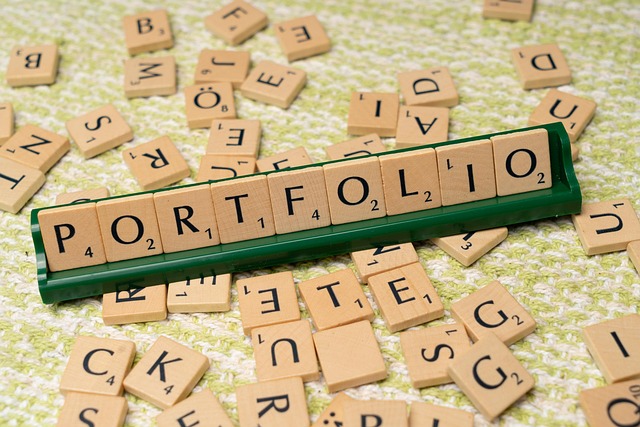

Diversification in Retirement Portfolio Design
How not to put all your golden eggs in one basket when the retirement clock is ticking
Let me tell you something about retirement planning that'll make your head spin - most people approach it completely backwards. They spend 40 years accumulating wealth only to gamble it away in their final innings. Crazy, right?
I learned this the hard way watching my uncle Bob (more on that trainwreck later). The truth is, diversification isn't just some Wall Street jargon - it's your financial oxygen mask for those golden years. And yet, so many smart people treat their retirement portfolio like a teenager organizing their sock drawer - total chaos!
The Art of Not Losing Your Shirt After 65
Here's the uncomfortable truth: your retirement portfolio needs to work harder than a college student during finals week. Why? Because unlike that 25-year-old version of you, time isn't on your side anymore. One major market downturn could mean the difference between sipping margaritas in Cancún or eating generic cereal in your daughter's guest room.
Pro tip: A well-diversified retirement portfolio should have at least 5-7 uncorrelated asset classes. I'm talking stocks (domestic and international), bonds, REITs, maybe some commodities, and yes - even that boring cash position everyone loves to hate.
Now before your eyes glaze over like a donut, let me break this down in human terms. Imagine your portfolio is like a baseball team:
- Your stocks are the power hitters (big growth potential but strike out often)
- Bonds are your reliable pitchers (steady returns, lower risk)
- REITs and alternatives? Those are your utility players (not glamorous but essential)
The magic happens in the allocation percentages. A common rule of thumb is "110 minus your age" in stocks (so a 60-year-old would have 50% stocks). But rules of thumb are like horoscopes - fun to read but dangerous to follow blindly.
"Diversification is protection against ignorance. It makes little sense for those who know what they're doing." - Warren Buffett (who ironically runs a pretty concentrated portfolio, but you're not Warren Buffett)
Here's where most people screw up: they think diversification means owning 15 different tech stocks. Newsflash - if they all crash together (like in 2000 or 2008), that's not diversification. That's Russian roulette with extra bullets.
Case Study #1: The Tech Millionaire Who Almost Lost It All
Meet "Dave" (name changed to protect the overconfident). Dave made $3.2 million in Microsoft stock options during the 1990s tech boom. By 1999, his portfolio was 92% Microsoft, 8% his company's 401(k) match. Classic "eggs in one basket" scenario.
Then 2000 happened. Microsoft dropped nearly 63% from its peak. Dave's $3.2 million became about $1.2 million practically overnight. The kicker? He was 58 years old with plans to retire at 60.
What saved him? Ironically, that measly 8% in his 401(k) - a target date fund holding bonds and other stocks. It became his financial life raft while he scrambled to diversify what was left. Today at 82, he lives comfortably on about $85,000/year - nice, but not the $200,000+ lifestyle he'd envisioned.
The lesson? Even if you "know" your company inside out, your retirement portfolio shouldn't look like a company loyalty program. Five years from retirement? No single stock should be more than 5-10% of your portfolio. Period.
Case Study #2: The Teacher Who Outperformed Hedge Funds
Now for a happier story. Sarah, a high school chemistry teacher (shoutout to educators!), retired in 2010 with $650,000 in her 403(b). Nothing spectacular, right? Except she did something revolutionary - she kept it simple.
Her allocation:
- 40% in a total US stock market index fund (expense ratio: 0.04%)
- 30% in international stocks
- 20% in bonds
- 10% in a REIT index fund
Twelve years later? That $650,000 grew to about $1.4 million despite two market crashes. How? By not panicking in downturns (those bond holdings gave her stability) and automatically rebalancing annually. Her "boring" portfolio outperformed 76% of professional money managers over that period (according to SPIVA reports).
The beautiful part? She spends maybe 2 hours a year managing this. Meanwhile, Dave was checking his portfolio like it was a newborn baby - multiple times daily at the worst possible moments.
Case Study #3: The Retiree Who Forgot About Inflation
Then there's my neighbor Frank (RIP). Retired in 2000 with $1 million split 50/50 between stocks and bonds - not terrible. But here's where he messed up: his entire bond allocation was in long-term Treasuries paying about 5% ($25,000/year).
Fast forward to 2020. Those same Treasuries were paying about 1.5% ($7,500/year) while his cost of living doubled. His stock portfolio helped, but he'd withdrawn so much during the 2008 crisis (panic selling!) that it never fully recovered. By 2018, he was dipping into principal and cutting back on medications.
The moral? Diversification isn't just about asset classes - it's about types within those classes. Frank needed some TIPS (Treasury Inflation-Protected Securities), maybe some corporate bonds, and definitely a more flexible withdrawal strategy.
My Uncle Bob's Cautionary Tale
Now for some personal trauma. My uncle Bob retired in 2007 (yes, that timing) with about $800,000 - 70% in bank stocks ("they always pay dividends!"), 20% in his house, and 10% cash. You can guess what happened next.
By 2009, his bank stocks were worth about $200,000, his house value dropped 35%, and he'd burned through half his cash. The man went from golfing three times a week to delivering auto parts at 68. Tragic.
What kills me? If he'd just parked that $800,000 in a simple 60/40 portfolio, he'd have about $1.6 million today even after withdrawals. Instead... well, let's just say I learned about diversification the hard way.
Warning: Sector concentration is the silent killer of retirement dreams. Loving your industry is great. Betting your retirement on it? Financial Russian roulette.
Your Turn: The Coffee Shop Test
Here's a fun exercise I give clients. Next time you're in a coffee shop, look around:
- The beans? Commodities market
- The shop? Probably a REIT-owned property
- The barista's iPhone? Tech stocks
- The milk? Could be a publicly traded dairy company
Your retirement portfolio should have exposure to all these economic layers. Not necessarily directly, but through diversified funds. Because here's the kicker - when one sector tanks (say, tech), others might thrive (like commodities). That's the magic of true diversification.
So tell me - does your portfolio pass the coffee shop test? Or is it more like putting all your money on the barista's startup idea for blockchain-enabled oat milk? (No judgment... okay, some judgment.)
Actionable tip: Run your portfolio through a free asset allocation analyzer like Morningstar's Instant X-Ray. You might discover you're way more concentrated than you thought.
The Glide Path Dilemma
Now let's talk about the "glide path" - that gradual shift from stocks to bonds as you approach retirement. Sounds sensible, right? Well... it's complicated.
The traditional target date fund might have you at 50% stocks by retirement. But with people living longer (30+ year retirements aren't rare anymore), being too conservative can be just as dangerous as being too aggressive. Inflation will eat your bond returns for breakfast.
My radical suggestion? Consider keeping 60-70% in stocks even into retirement, but with better diversification:
- More international exposure (about 40% of stock allocation)
- Smaller positions in alternatives like infrastructure or commodities (5-10%)
- Higher-quality bonds (think Treasuries and investment-grade corporates)
Remember: Your portfolio isn't retiring - you are. It needs to keep working for potentially decades.
The Withdrawal Wildcard
Here's what nobody tells you about retirement diversification: it's not just about investments, it's about withdrawal strategy. Having multiple account types (taxable, tax-deferred, Roth) gives you flexibility when tax laws change (and they will).
Imagine this scenario:
- Bad market year? Pull from cash or bonds to avoid selling depressed stocks
- Tax hikes coming? Tap that Roth IRA
- Unexpected medical bill? Maybe harvest some long-term capital gains
This is why I recommend keeping 1-2 years' worth of expenses in cash/cash equivalents during retirement. Not mathematically optimal, but psychologically priceless when markets tank.
"The four most dangerous words in investing: 'This time it's different.'" - Sir John Templeton (whose diversified global approach made him billions)
Final Thoughts: Beyond the Spreadsheet
At the end of the day, retirement diversification isn't just about numbers - it's about sleeping at night. Because no spreadsheet can capture the gut-wrenching fear of watching your life savings evaporate during a market crash.
So ask yourself: Does my portfolio let me:
- Weather any economic season?
- Adapt to life's curveballs?
- Survive my own worst behavioral impulses?
If not, maybe it's time to rethink that "all in on crypto/dividend stocks/gold" strategy. Your 80-year-old self will thank you.
Now if you'll excuse me, I need to go rebalance my own portfolio - after checking how my uncle Bob's doing at the auto parts store. Some lessons stick with you.


